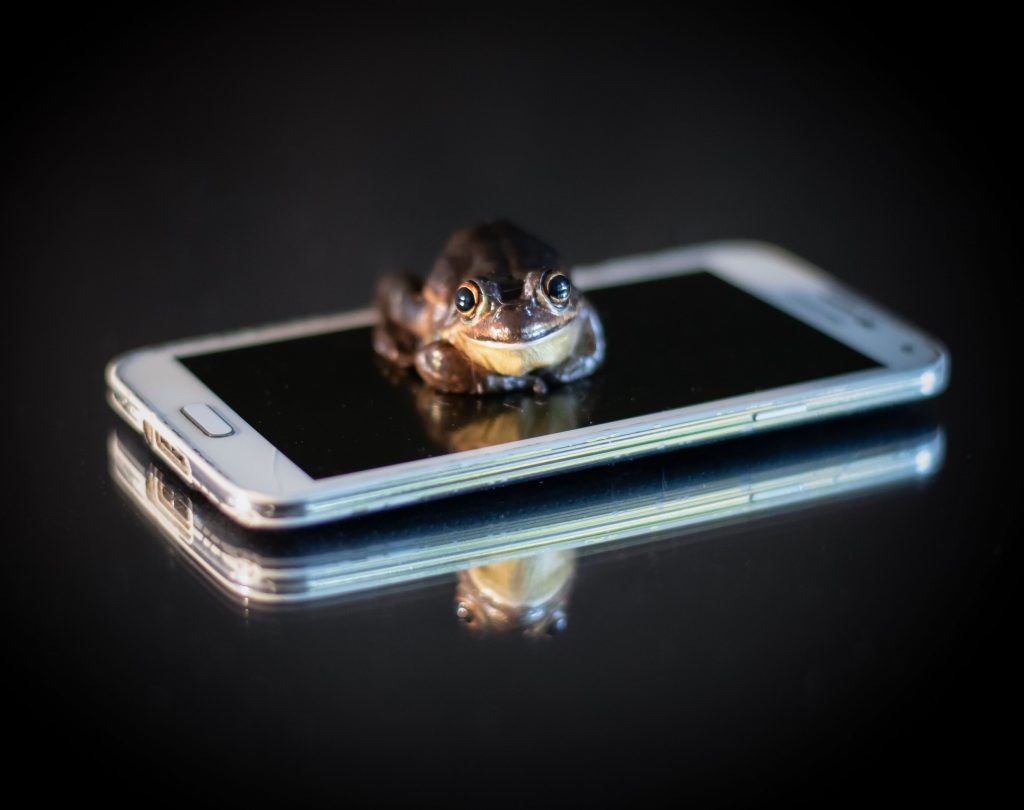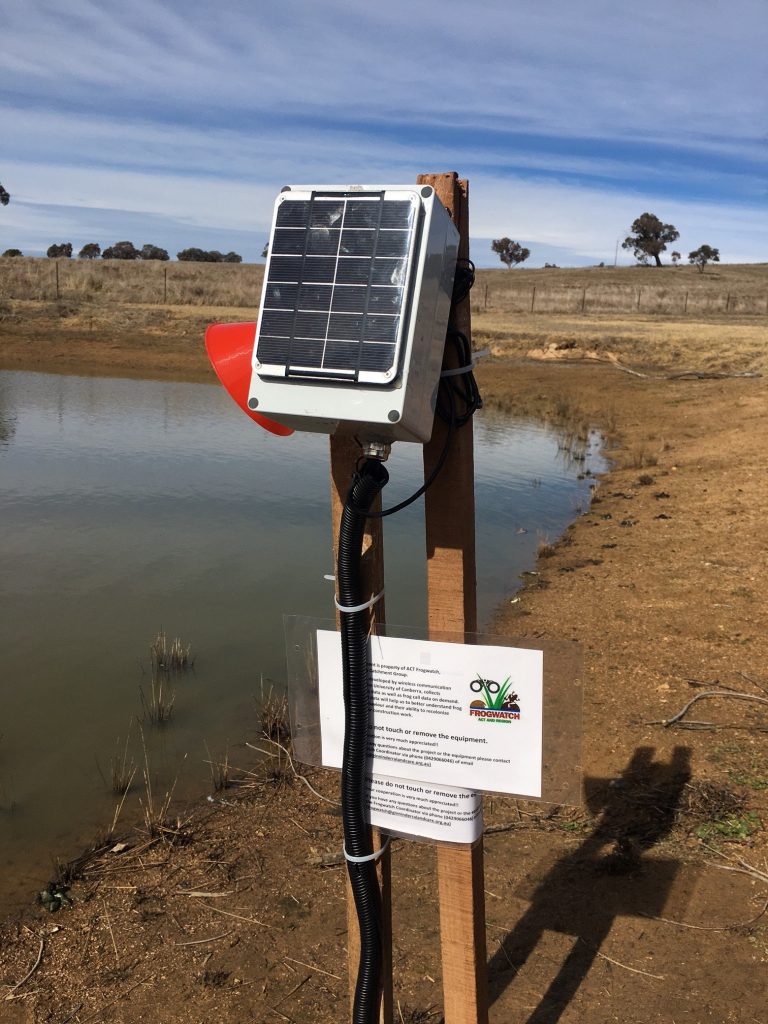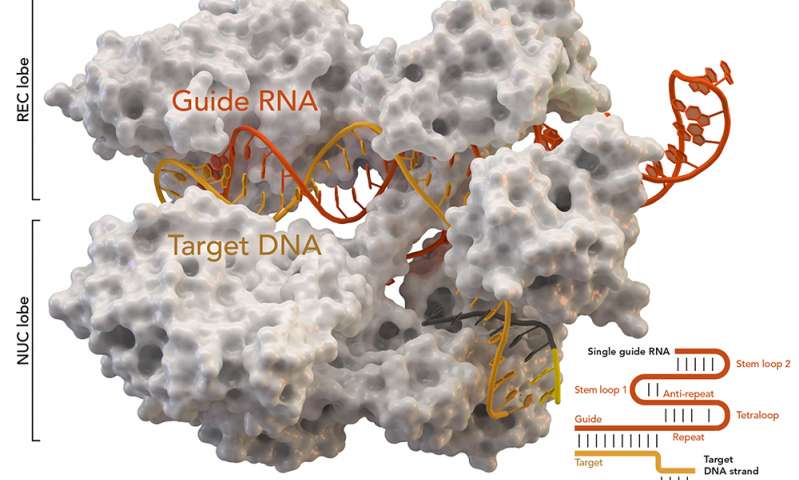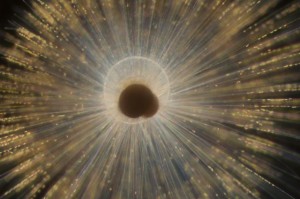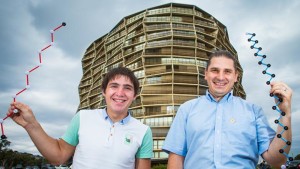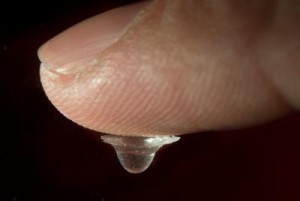Alan Alda (US actor and science communicator) was invited to celebrate the opening of the Australia National Centre for the Public Awareness of Science (CPAS) on Tuesday, March 8, 2016 according to a March 8, 2016 CPAS press release (Note: Links have been removed),
Actor Alan Alda, best known for his starring role in the television series M*A*S*H, opened new facilities for CPAS today [March 8, 2016].
Mr Alda, US Ambassador to Australia his Excellency John Berry, ANU [Australian National University] Vice-Chancellor Professor Brian Schmidt, and CPAS Director Professor Joan Leach opened the new building with speeches in the greenery of University Avenue, followed by ribbon cutting at the new CPAS office.
The opening follows a new partnership agreement between CPAS and the Alan Alda Center for Communicating Science, based in Stony Brook University’s School of Journalism in the United States.
Mr Alda is a visiting professor in Stony Brook University’s School of Journalism and was a founding member of the Alda Center in 2009. His vision was to teach scientists the skills he had mastered as an actor to help them communicate better with policymakers and the public.
Mr Alda said it was time for CPAS and the Alan Alda Centre to join forces and to start collaborating.
“It couldn’t be better. We both have something to offer the other,” Mr Alda said.
“The Centre here has an extraordinary grasp of the history and theory of science communication. We have in turn innovative ways of teaching the actual skills of communication.
“We have turned many people who are not comfortable facing an audience, or even worse comfortable facing an audience but making an audience uncomfortable facing them, we’ve turned them into master communicators, and they are happy about it and their science is reaching the pubic.”
Professor Schmidt said the new facilities celebrated the partnership between ANU and the Alan Alda Center and he looked forward to seeing the result of the new collaboration.
“CPAS is one of the jewels in the crown of ANU,” Professor Schmidt said.
“The centre is Australia’s oldest and most diverse academic science communication centre, and it was formed in 1996. It took very special people to come up with the vision for CPAS, and its development blazed a trail that has been emulated since by other institutions.”
The event was completed by a two hour workshop for CPAS students and stuff run by Alda Center Associate Director, Dr Christine O’Connell, and Mr Alda. The workshop was the first taste of the collaborative exchange yet to come between the two institutions.
There is a March 10, 2016 interview/chat with Alan Alda by Rod Lambert and Will Grant featuring text and audio files on The Conversation.com (Note: Links have been removed),
…
Rod: Did you experience any particular kinds of resistance to try to sell this message that scientists should communicate more?
Alan: Ten or 15 years ago, when I began trying to sell this idea, I did get plenty of resistance. I don’t know how many universities I talked to, it was just a handful, but I didn’t get any enthusiasm until I talked to Stony Brook University in New York, and they started the Center for Communicating Science there, which I’m so thrilled is now collaborating with the National Centre for the Public Awareness of Science. It’s like a dream come true, you’re our first international affiliation.
Rod: You’re welcome. Obviously there’s nothing in it for us, we’re just doing this out of the kindness of our hearts (laughs).
Alan: Ha ha ha, well you’ve got all this experience. We’ve got some pretty innovative ideas that we’ve been working on. We kind of use the Stony Brook University setting as our laboratory and we then spread what we’ve learned around the States.
Now we will be sharing it with you and we hope to get your innovations and ideas, and help to share them because we now have the network that’s growing. Every month, it gets a little larger.
We have 17 universities and medical schools and institutions in America that are hooked into this network. We’re going to be sharing all the things, all the creative ideas that come out of each of these places.
That really appeals to me because the people who really want to see communication thrive, the communication of science, they get so enthused about it. It’s hard to get them to stop working night and day on it because you see the results blooming and it makes me very happy.
…
They also cover Alda’s disinterest in becoming a doctor (ironic given that he’s probably best known for his role as a doctor in the MASH television series) and his presence at the March 9 – 13, 2016 World Science Festival in Brisbane.
For anyone who may recognize the World Science Festival name, it’s the progenitor for this event in Australia (from the World Science Festival in Brisbane About page),
The World Science Festival began in New York in 2008 and is an annual weeklong celebration and exploration of science. Through gripping debates, original theatrical works, interactive explorations, musical performances, intimate salons, and major outdoor experiences, the Festival takes science out of the laboratory and into the streets, parks, museums, galleries and premier performing arts venues of New York City.
The World Science Festival brings together great minds in science and the arts to produce live and digital content that presents the wonders of science and the drama of scientific discovery to a broad general audience. Hailed a “new cultural institution” by the New York Times, the Festival has featured scientific and cultural luminaries including Stephen Hawking, Maggie Gyllenhaal, E.O. Wilson, John Lithgow, Sir Paul Nurse, Glenn Close, Harold Varmus, Yo-Yo Ma, Steven Weinberg, Philip Glass, Eric Lander, Steven Chu, Chuck Close, Richard Leakey, Bobby McFerrin, Sylvia Earle, Anna Deavere Smith, Oliver Sacks, Liev Schreiber, Mary-Claire King, Charlie Kaufman, Bill T. Jones, John Hockenberry, Elizabeth Vargas among many others. The annual Festivals have collectively drawn more than 1.3 million visitors since 2008, and millions more have viewed the programs online.
World Science U is the Foundation’s online education arm where students and lifelong learners can dive more deeply through artfully produced digital education content presented by world-renowned scientists.
The World Science Festival is a production of the World Science Foundation, a not-for-profit organisation headquartered in New York City. The Foundation’s mission is to cultivate a general public informed by science, inspired by its wonder, convinced of its value, and prepared to engage with its implications for the future.
WSF Brisbane
The inaugural World Science Festival Brisbane will bring some of the world’s greatest thought leaders to Queensland, showcase local scientists and performers from around the Asia Pacific region, and host the brightest and the best from previous events in New York.
At the World Science Festival Brisbane, the biggest stars of science will present the beauty, complexity, and importance of science through diverse, multidisciplinary programming that is the World Science Festival signature. The inaugural World Science Festival Brisbane will take place between 9 and 13 March 2016 and is presented by the Queensland Museum.
Queensland Museum is located at South Bank in the heart of Brisbane’s Cultural Precinct, and is the most visited museum in Australia*. Permanent attractions include: the Sciencentre, which offers a wealth of interactive science and technology experiences; the Discovery Centre, the Lost Creatures: Stories from Ancient Queensland Gallery; and the Dandiiri Maiwar Aboriginal and Torres Islander Centre.
The Museum also regularly hosts national and international travelling exhibitions and offers a range of public and educational programs and activities, which attract more than 1 million visitors to the Cultural Precinct each year. Queensland Museum exhibits and stores a significant proportion of the State Collection and houses several research and conservation laboratories.
A little digging resulted in a few more details about this WSF Brisbane undertaking in a Media Kit for the 2016 inaugural event.
Exclusive rights have been granted to the Queensland Museum to present the event in the Asia-Pacific region for the next six years.
The inaugural World Science Festival Brisbane will bring some of the world’s greatest thought leaders to Queensland, showcase local scientists and performers from around the Asia-Pacific region, and host the brightest and the best from previous events in New York.
The inaugural World Science Festival Brisbane will take place over four days and five nights across the South Bank Cultural Precinct from Wednesday 9 to Sunday 13 March 2016.
…
More than 100 scientific luminaries from nine countries will gather for the inaugural World Science Festival Brisbane at venues across the Cultural Precinct and South Bank.
Some of science’s brightest stars making special appearances at the festival include Emmy award-winning actor, author, science enthusiast and World Science Festival board member Alan Alda; Nobel Laureatephysicist Brian Schmidt; pioneering marine biologist Sylvia Earle; celebrated astronaut Andy Thomas; renowned physicist, best-selling author and festival co-founder Brian Greene, and many more.
…
Tracy Day, Co-Founder and CEO of the World Science Festival remarked, “By recasting science with art, music and story, we’re shifting science toward the centre of culture. We’re touching all those people who love the arts but run the other way, when it comes to science.
…
Over 100 events (free and ticketed) make up the World Science Festival Brisbane program from Wednesday 9 – Sunday 13 March 2016. Highlights include:
• Celebrating the recent 100th Anniversary of Einstein’s General Theory of Relativity, two premiere performances and a deep dive into the science, impact and unresolved mysteries of Einstein’s most profound discovery:
− Light Falls – a new theatrical work featuring festival co-founder Brian Greene and an ensemble cast; written by Greene and created with composer Jeff Beal (“House of Cards”) and the 2015 Tony-award winning team from 59 Productions (An American in Paris);
− Dear Albert – a reading for the stage written by Alan Alda, featuring Jason Klarwein as Albert Einstein, with Anna McGahan and Christen O’Leary;
− Relativity Since Einstein – an illuminating exploration of Einstein’s ground-breaking insights, moderated by Greene and featuring a line-up of top thinkers in the field.
• Street Science! – a free two-day extravaganza for the whole family featuring everything from live turtle hatching, drones, coding workshops and robot combat to gastronomic demonstrations, taxidermy exhibitions and science-adventure storytelling
• New York Signature Events: The line-up for the inaugural WSF Brisbane includes six Signature Events straight from New York. Provocative, entertaining and accessible, these fast-paced programs explore ground-breaking discoveries, cutting-edge science and the latest technological innovations, guided by leading thinkers from around the world, including:
− Dawn of the Human Age – are we entering a new geological epoch: the Human Age?
− Alien Life: Will We Know It When We Find It? Scientists across disciplines – astronomers, astrophysicists, and astrobiologists – are intensely studying the evolution of life on Earth and listening for signals from outer space to help identify life in the universe.
− The Moral Math of Robots – Can machines learn right from wrong? As the first generation of driverless cars and battlefield warbots filter into society, scientists are working to develop moral decision-making skills in robots. Break or swerve? Shoot or stand down?
• Diverse and uniquely fascinating events for general audiences and students that showcase scientists, researchers, philosophers, artists, authors, inventors and more, exploring and debating questions about the universe, our changing world, and the role science plays in some of the most urgent issues of our time. Including:
− Can We Save our Reefs in Time? – Global ideas that may help preserve our amazing natural reefs are on the agenda when leading experts discuss revolutionary scientific measures that could assist marine scientists and biologists determine exactly what’s happening to the Great Barrier Reef, and indeed reefs all over the world.
− Chasing Down the Comet – landing a spacecraft on a comet at 40,000 k mph, with scientists from the European Space Agency and NASA who actually did it.
− Catching up with the Jetsons: Cities in 2050 – world renowned scientists, urban planners, and futurists consider the future of the city.
−The Martian film and talk – a once in a lifetime opportunity hear an astronaut and a NASA scientist discuss whether the blockbuster movie gets the science right, with Andy Thomas and Pamela Conrad.
• Salon events that dive deeper into the science of specific topics with informal discussions challenging participants to consider their shared passions from a fresh perspective.
• Hands-on workshops where budding scientists can spend time with working scientists, learning about their fascinating work in fields as diverse as genetics, art conservation, biology, the environment, ichthyology, game design, zoology, palaeontology, robotics and sports engineering.
Congratulations to the organizers for pulling together an exciting programme. BTW, the original World Science Festival will be taking place June 1 – 5, 2016 in New York.
Getting back to CPAS and for anyone interested in it (the only institution that I’ve seen offering science communication degrees for undergraduates, masters, and PhDs), there’s more from their History page,
The roots of CPAS started to grow in the 1980s, when two ANU academics – physicist Dr Mike Gore (now Professor), the founder of Australia’s National Science and Technology Centre, Questacon, and biologist Professor Chris Bryant, then ANU Dean of Science – started up a Graduate Certificate in Science Communication program. They established it as a formal training program and recognised qualification for groups of postgraduate students who had been performing outreach science shows with Questacon since the early 1980s. That program has become the Master of Science Communication Outreach degree, still run by CPAS, which is the host program for the Shell Questacon Science Circus, still run by Questacon.
In 1996 the ANU employed Dr Sue Stocklmayer (now Professor) as a new science communication academic to work full time on developing the program and other science communication teaching and research ventures at the University. It was she who proposed the establishment of a Centre for the Public Awareness of Science. Professor Bryant was the first CPAS Director, but stepped aside in 1998, when Dr Stocklmayer took the reins. She remained the Director until 2015. In 2016, Professor Joan Leach assumed the role of CPAS Director.
The ibis was chosen as the CPAS mascot because it was the totem symbol of the Egyptian god Thoth, God of Science and Wisdom and Scribe of the Gods. The Ibis is also a ubiquitous travelling bird.
The opening ceremony for CPAS was performed by Professor Richard Dawkins, the first Charles Simonyi professor of the Public Understanding of Science at Oxford. After receiving an honorary degree (Hon D Litt) from the University he spent the rest of the afternoon at CPAS, in its old quarters of what is now the Peter Baume Buiding. There he cracked a ceremonial ‘ibis egg’ and mixed with members of the university. Photos of the event can be seen below.
Since its humble origins CPAS has become a world class science communication centre, growing in staff and student numbers, offering science communication education at all levels from undergraduate to PhD, building a comprehensive research program, and engaging in diverse science outreach and policy activities. CPAS staff regularly travel to numerous countries across the world, offering science communication education, training and support to science communicators, science centre staff and science teachers. In 2000 CPAS became an accredited Centre for the Australian National Commission for UNESCO. CPAS also boasts current partnerships with Questacon, Shell Australia, the National University of Singapore, the Government of Vietnam, the Australian Government’s Inspiring Australia program, the Science Communication Research and Education Network, and the Science Circus Africa initiative.
That’s all, folks.
